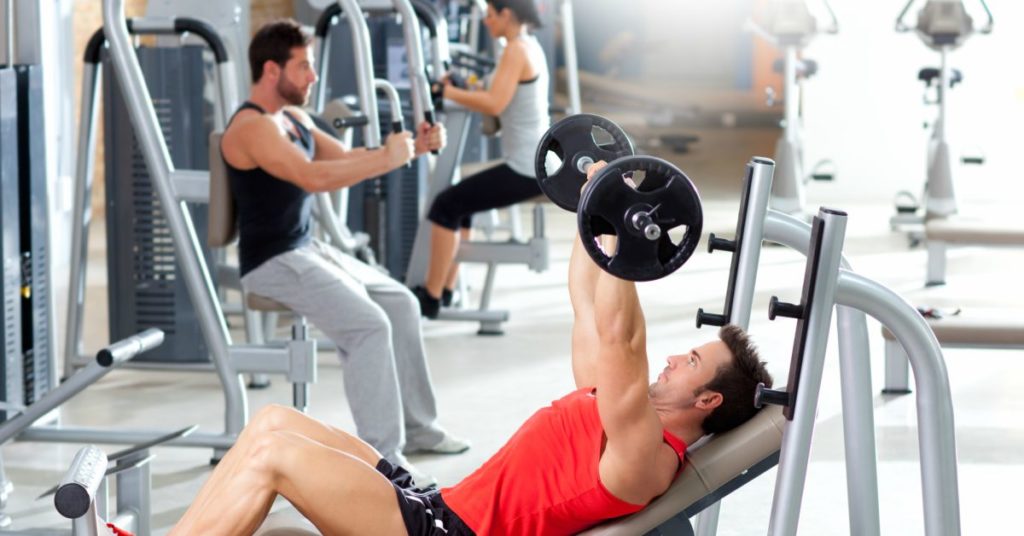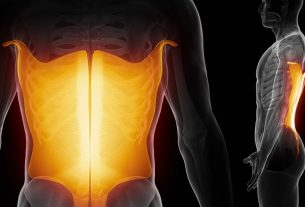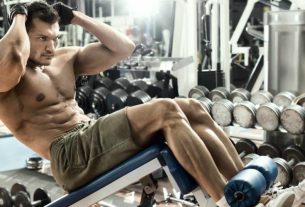Would you rather not take the step to the weight room as a novice athlete because you have no idea what to do with all those complicated devices? And are you afraid of embarrassing yourself in front of all the big-muscled men who can undoubtedly be found in the weight room?
Then this article is exactly what you are looking for, because we will walk you through the gym. We tell you which devices you can come across, how to use them and which muscles you can train with them. So the strength training for beginners actually starts here.
STRENGTH TRAINING FOR BEGINNERS: THE FACTS AND MYTHS
Before we go through the actual tour of the various devices, we first tell you what strength training is exactly. This way you not only know what to do with the devices, but also why you are doing it.
In fact, strength training is performing exercises to develop and strengthen your muscles. You do this with short explosive movements and often with the help of weights such as dumbbells, a barbell or a machine. However, it can also be done with your own body weight, as is the case with a push-up, for example.
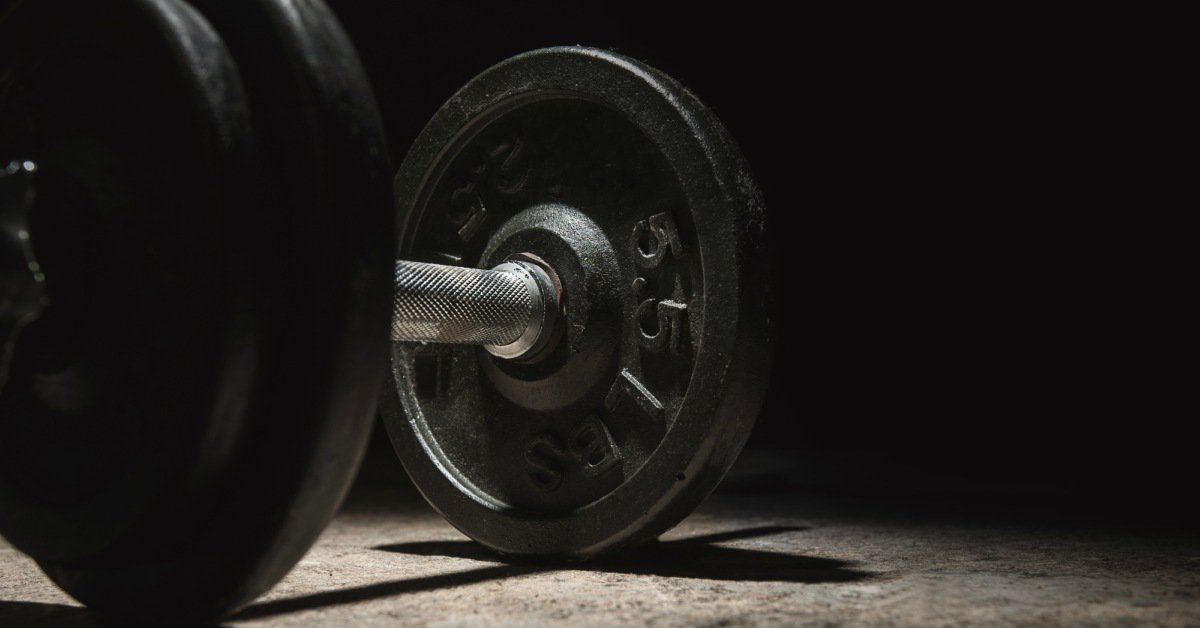
By playing with weights during your training, you actually damage your muscles a little every time. In response, your body will try to repair the damage in such a way that the muscle will not be damaged again with the same load. The recovery actually makes the muscle stronger and bigger, so that you can handle the same weight better in a subsequent workout. However, if you pick up a heavier weight, you will damage your muscle again and your body will recover in such a way that you can easily carry that weight in the future.
However, strength training alone will not ensure that your muscles will develop. This also requires rest and good nutrition.
WHICH DEVICES CAN YOU EXPECT?
So there are plenty of reasons for both men and women to hit the gym and give the machines a chance. Basically there are two types of devices. For example, you have devices with cables on the one hand and devices with rods on the other. This last group is especially interesting for the novice strength athlete, because they are more stable and therefore easier to use. The devices with cables are therefore more unstable, but on the other hand can provide a more effective training.
In this article you will learn how to use 10 devices and which muscle groups you train with them.
Keep an eye on!The fact that the devices are in this list does not mean that they can also be found in your gym. This can differ from gym to gym.
1. THE SMITH MACHINE
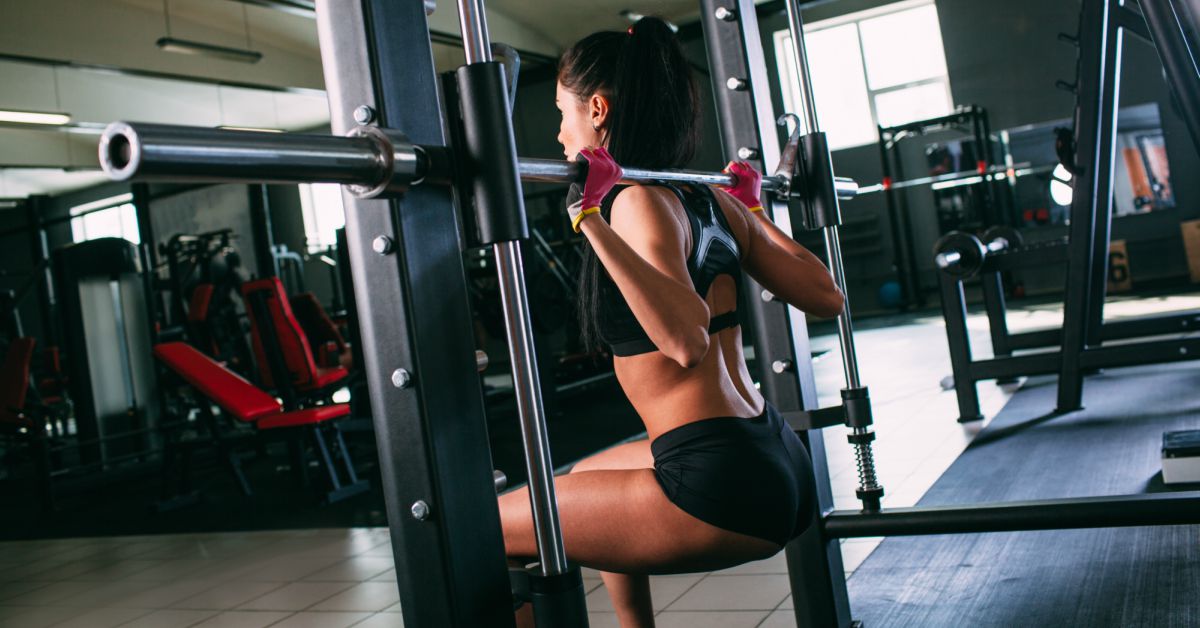
The first device we’ll cover is the Smith machine. This is basically a barbell fixed to a vertical steel rail, allowing it to move only up and down. You can fix the barbell at different points, so you don’t necessarily need a spotter if you can’t hold the weight anymore.
With this machine you can perform different variations of the squat and train your quadriceps, hamstrings, glutes and calves.
2. THE ADDUCTOR AND ABDUCTOR MACHINES
The next two machines are so similar that we are discussing them at the same time. With both machines you try to move a weight with your legs. To do this, sit on the chair and place your feet on the two footrests. With your hands you can grab two handles next to the seat.
With the abductor machine, place the outside of your knees against the appropriate cushions and try to move your legs out as far as possible by pushing against these cushions. With the adductor machine, you place the inside of your knees against the pillows and try to move your legs towards each other.
When using the abductor machine you mainly train the outside of your thighs and your buttocks and with the adductor machine you mainly train the inside of your thighs.
3. THE LEG PRESS MACHINE
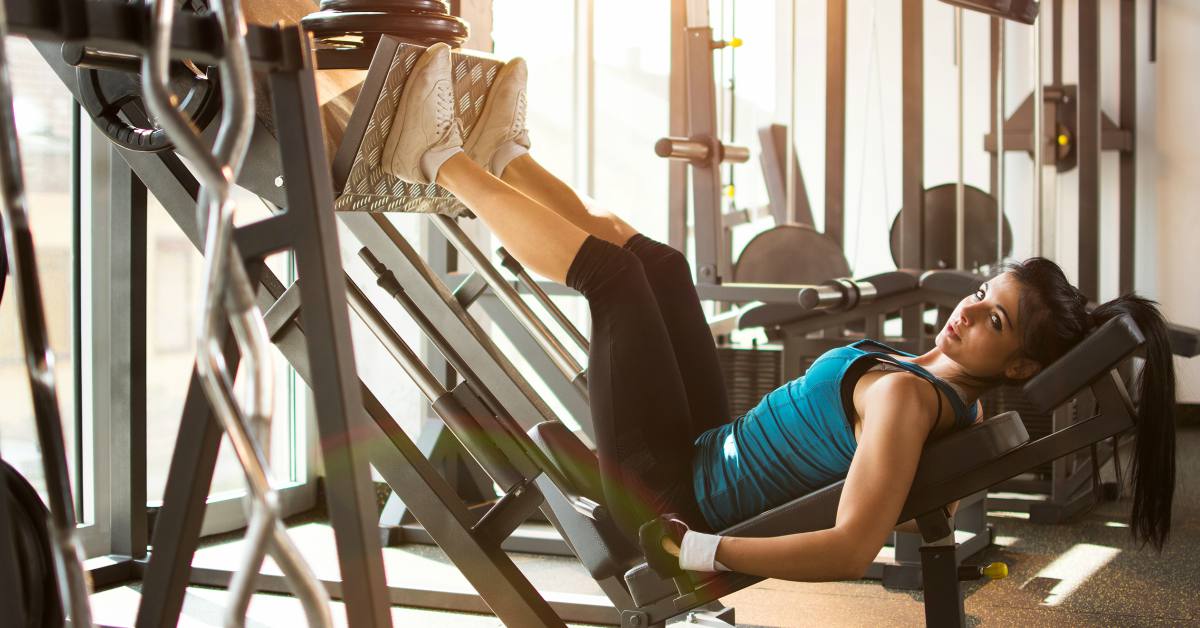
The leg press machine is designed to push a weight away with your legs. To do this, sit on a chair and place your feet on a platform that you then push away from you by straightening your legs. This platform is weighted by weight plates or by cables that run to weights. Depending on the type of machine you use, you sit parallel to the ground or at an angle of about 45 degrees.
With the leg press you train your quadriceps, hamstrings, calves and glutes.
4. THE FLY MACHINE
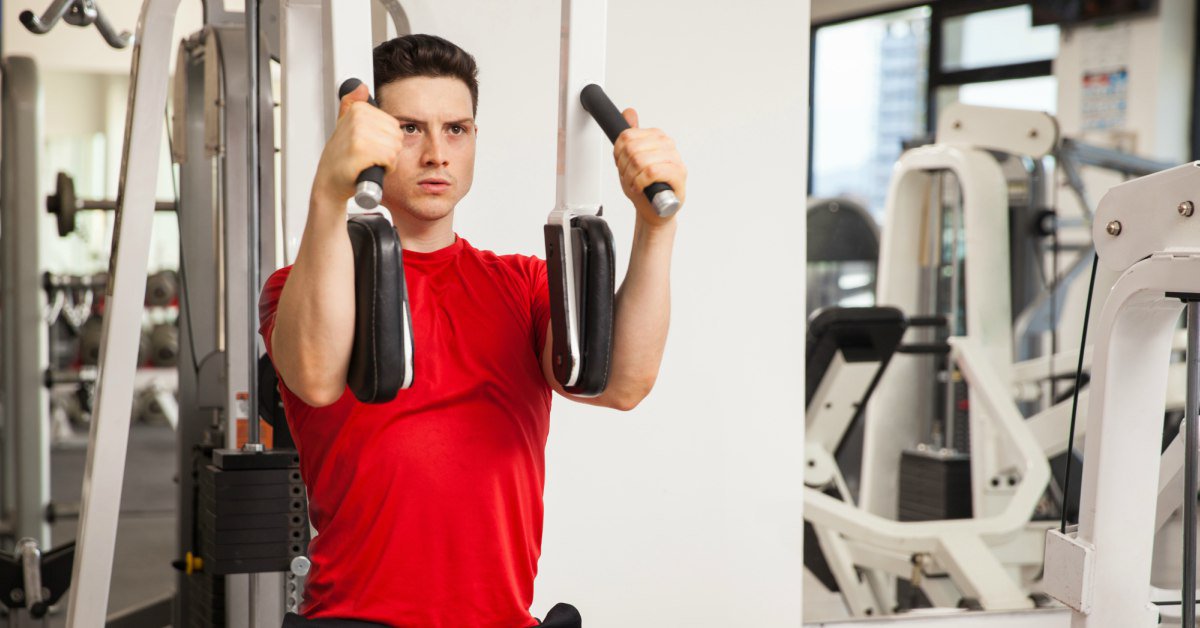
The fly machine is especially a good machine if you want to do an exercise to train your chest muscles. To do flyes , sit on the machine and adjust the weight correctly. Next, grab the handles and push your hands forward until they meet in front of your chest. Depending on the type of machine, you have stretched or bent arms for this movement. In the latter case, you push against the weight not only with your hands, but also with your forearms, which rest on special pillows.
5. THE PULL-DOWN MACHINE
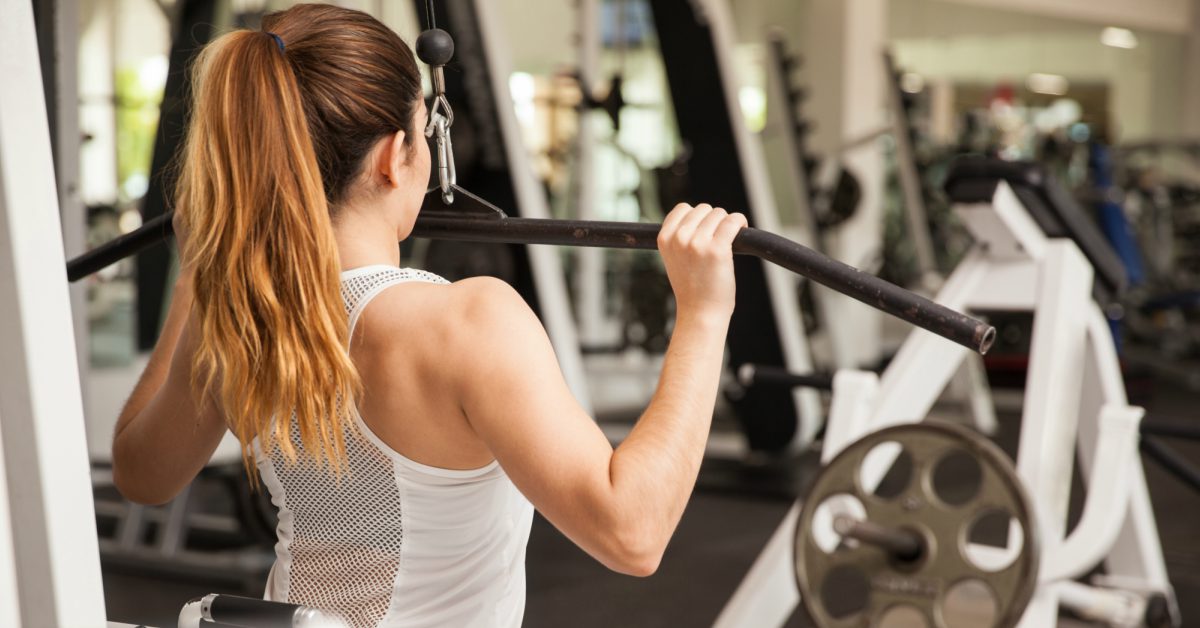
The pull down machine or the lat pulley, as the device is affectionately known among athletes, is next in line. On this machine, you perform the lat pulldown . You are supposed to sit on the machine and then pull a bar that is attached above your head towards you. This allows you to pull up the weight that you have set yourself.
With this exercise you mainly train your back muscles and to a lesser extent your biceps.
6. THE TRICEPS EXTENSION MACHINE
You can of course also train your triceps with the help of a device, namely the triceps extension machine. You sit on the machine with your back against the backrest. Then place your upper arms and elbows on the appropriate cushions and grip the handles next to your head. You have now bent your arms. Then stretch them by pushing the handles forward. This pushes a weight away and you train your triceps .
This exercise is often performed using dumbbells or in the cable crossover. We will tell you how to use the latter in point 13.
7. THE HYPEREXTENSION BENCH

This device looks a bit scary at first, but in principle it’s not that bad. To use it, stand on the platform so that your heels rest against the supports. Then lean your hips on the pads and place your hands near your head. Now the idea is that you tilt your upper body forward and then push yourself back up. You can also hold a weight plate in front of your chest to make the exercise harder.
With the hyperextension bench, which is also sometimes called the roman chair, you mainly train the muscles in your lower back .
8. THE PREACHER CURL MACHINE
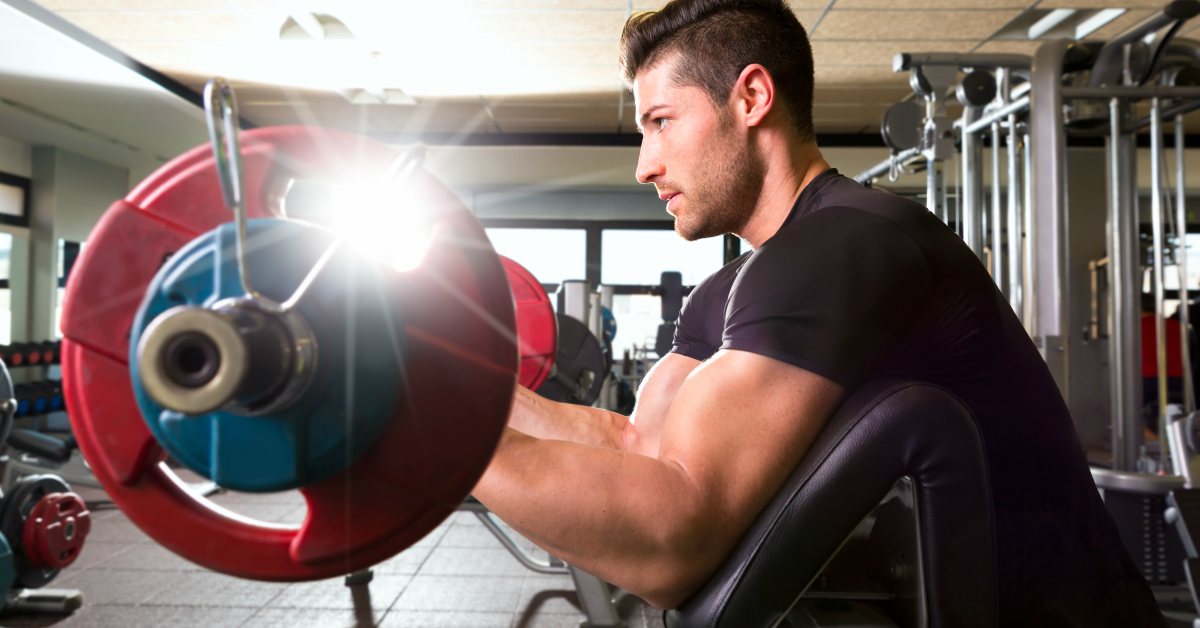
The preacher curl is the exercise you can perform on the preacher curl machine (surprise!). To do this, sit on the machine and set a desired weight. Then place your upper arms on the appropriate cushions and grab the handles. By bending your arms now, you pull the weight up and you train, how could it be otherwise, your biceps.
In addition to the preacher curl machine, there is also a preacher curl bench. You can basically perform the same exercise on this, but instead of weights attached to the machine, you use a barbell.
9. THE CHEST PRESS MACHINE
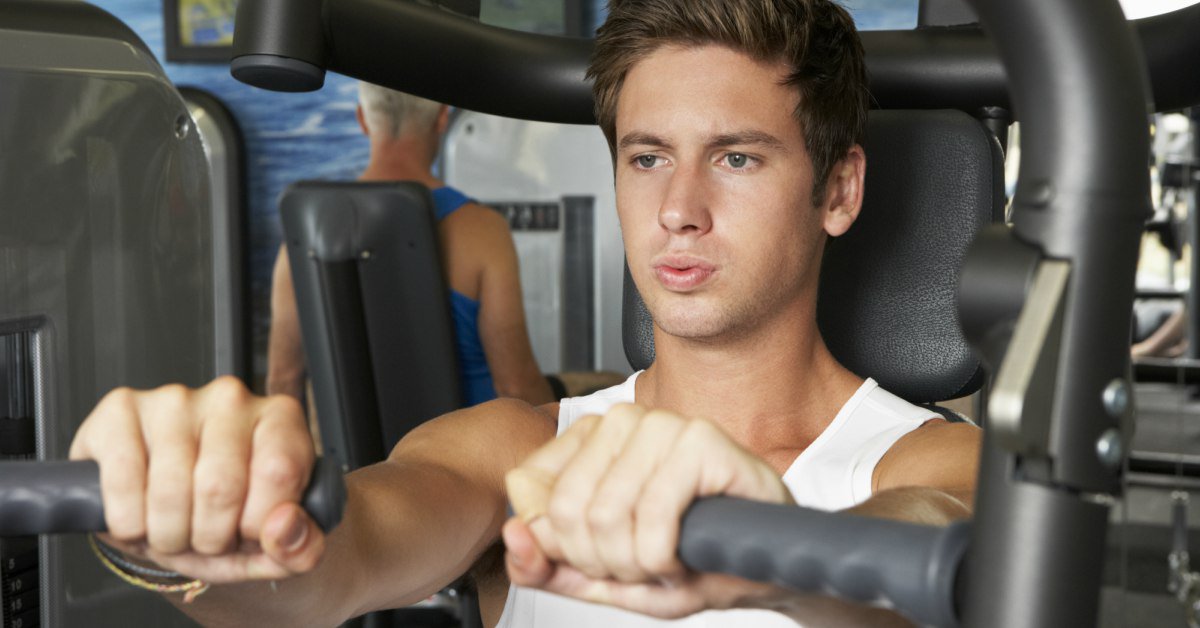
Would you like to bench press, but do you find it a bit exciting to be busy with a heavy barbell above your head? Then the chest press machine is the solution.
To do the chest press on this device, sit on the chair so that your back is straight against the backrest. Your feet rest on the floor. Then set the correct weight and grab the handles. You can now push this forward until your arms are straight, but not locked. Then bring the weight back to you by bending your arms. In this way you train your chest muscles, triceps and shoulders.
10. THE SHOULDER PRESS MACHINE
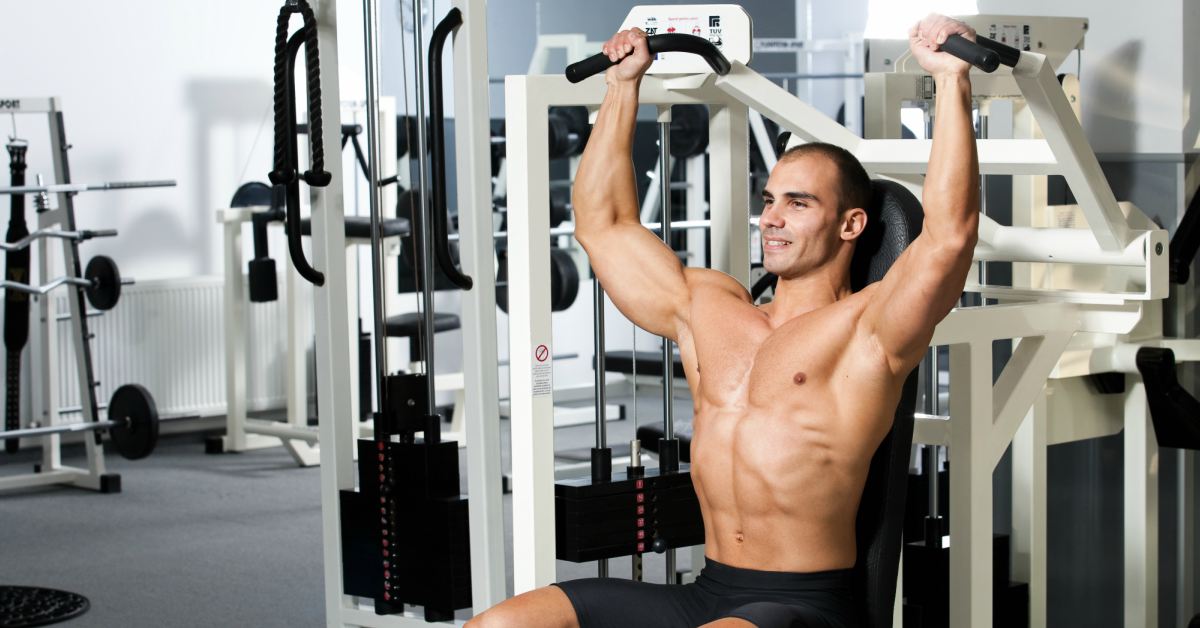
In principle, the shoulder press machine is very similar to the chest press machine. However, the name already tells you what the difference is. With the shoulder press machine the emphasis is on the shoulders and with the chest press machine the emphasis is on the chest.
However, the usage is pretty much the same. Also on this machine you sit with your back straight against the backrest, after which you move a weight by stretching your arms. However, you do not push the weight forwards here, but upwards.
